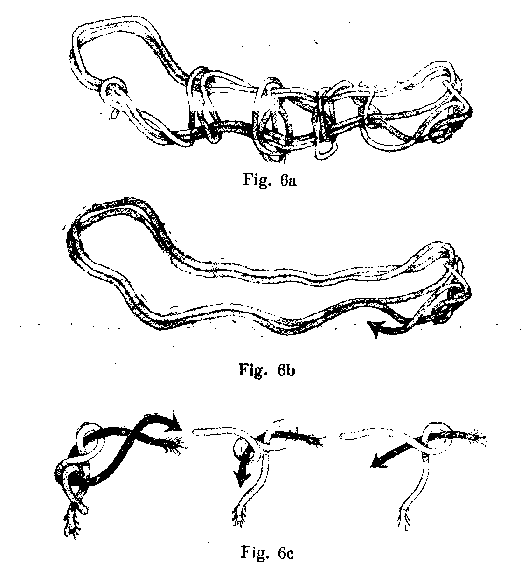
|
|||
|
[ Previous ][Contents][ Next ] |
|||
|
typical atrophy of Pyorrhea, disease still Progressing at the time of d eath of the patient, and proves conclusively that this disease existed among the ancient inhabiants of Sidon some 2500 years ago. That this retentive appliance was highly successful during the patient's lifetime there can be little doubt, for even now it serves its original purpose: that of holding the teeth securely in place in the mandible. In fact, only a short time ago the writer experienced no little difficulty in removing the teeth from the appliance.
There has been some question concerning the location in the mouth which certain ancient dental appliances have occupied during the lifetime of their owners(19) but there is certainly no such doubt in regard to the Ford specimen. The appliance itself (Fig. 5) consists of a fine 24 gauge wire of pure gold ingeniously woven around and firmly binding together the six anterior teeth of the lower jaw (Fig. 6a). This ancient dentist's first step (Fig. 6b) in applying this brace was to take two complete turns with the gold wire around the group of six anterior teeth beginning at the lower left canine. Coming back to the starting point with the second turn of wire lie has passed it through a loop oil its free end and then doubled back making a knot (Fig. 6c) very similar to a "Bowline on a bight" so well known to sailors. From this knot the wire passed inward through the in 
|
|||
|
|||
|
[ Previous ][Contents][ Next ] |
|||
|
Created by the Digital
Documentation Center at AUB
in collaboration with Al
Mashriq of Høgskolen i
Østfold, Norway. 980519 pas - Email: hseeden@aub.edu.lb |